Your trailer’s tires help carry the weight of your cargo, and in order to do so safely, it’s necessary to inspect them often for wear and replace them as needed. Waiting too long to replace your trailer’s tires can lead to a number of issues and even create dangerous situations, so we want to make sure you know how to spot the signs that your tires need to be changed.
You should be inspecting your tires before you use your trailer, every time. As you inspect your tires, keep in mind the following areas that need to be inspected for indications that your tires should be replaced.
Tire TreadThe tread on your trailer’s tires provide the gripping action and traction needed to keep your trailer from slipping and sliding on the road, driveways, and more. Look at tire treads for signs of uneven wear patterns. As a general rule of thumb, your tires should be replaced when the tread is worn down to 2/32 of an inch.
Tires do have built-in tread wear indicators to help you realize when it is time to replace them. The indicators are the raised sections with intermittent spacing in the bottom of the tread grooves. When these indicators appear even with the outside of the tread, it’s time to replace your trailer’s tires. You can also check this by placing a penny in the tread depth with Lincoln’s head upside down and facing you. If you can see the top of his head, you need to buy new tires. Remember to include your trailer’s spare tire in your regular inspections!
Cracks, Punctures, and Foreign ObjectsCracks, punctures, and foreign objects can create spaces that allow air to escape from your tires. If you don’t catch it soon enough, any of these could lead to a blowout or worse. Remove foreign objects as soon as you notice them wedged in your tire tread to prevent further damage. If you notice a crack or if your tire is punctured, it may be repairable by plugging the hole and patching the area inside the tire that surrounds the hole, depending on the location. If this doesn’t resolve the issue, or if your tire’s sidewall has been punctured, it will need to be replaced. Remember, any attempt to repair trailer tires should be done by a tire professional.
If this doesn’t resolve the issue, or if your tire’s sidewall has been punctured, it will need to be replaced. Remember, any attempt to repair trailer tires should be done by a tire professional.
In addition to inspecting tires for cracks, be sure to check the valve stem for cracks as well. This is important because the valve stem is used to inflate the tire. If a tire cannot be properly inflated due to cracks in the valve stem, it’s time to replace the tire.
Damage or DeformitiesKeep an eye out for damage and deformities such as bulges, cuts, and flat or extremely bald spots and replace your tires if you notice any of these.
AgeAge is also a factor to consider when determining if your trailer’s tires need to be replaced. Each tire manufacturer will likely have different recommendations on the service life of a particular type of tire, but statistics suggest the average life of a trailer tire is about five years under normal use and maintenance conditions, and that tire replacement should be considered after three years, even if the tires appear to have adequate tread depth.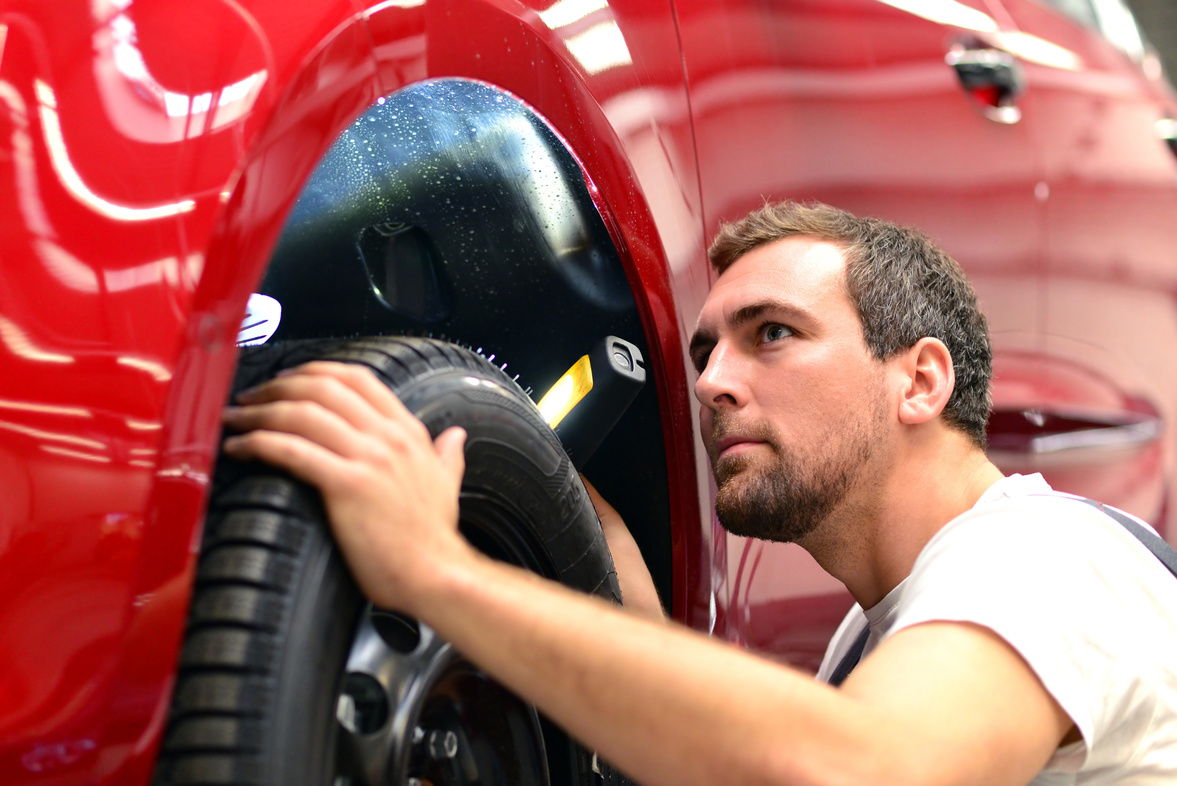 Consult with your tire dealer if you have questions regarding the life expectancy of your trailer’s tires.
Consult with your tire dealer if you have questions regarding the life expectancy of your trailer’s tires.
In addition to knowing how to spot the signs that your trailer’s tires are due to be changed, it’s important to know the most common causes of trailer tire damage and avoid them to help maintain safety on the road, and extend the life of your tires and improve your vehicle’s fuel economy. Trailer tire damage is often a result of:
Your trailer’s tires are a key element of your trailer, and knowing when to replace them is essential to ensure your own safety, as well as the safety of your cargo and others on the road.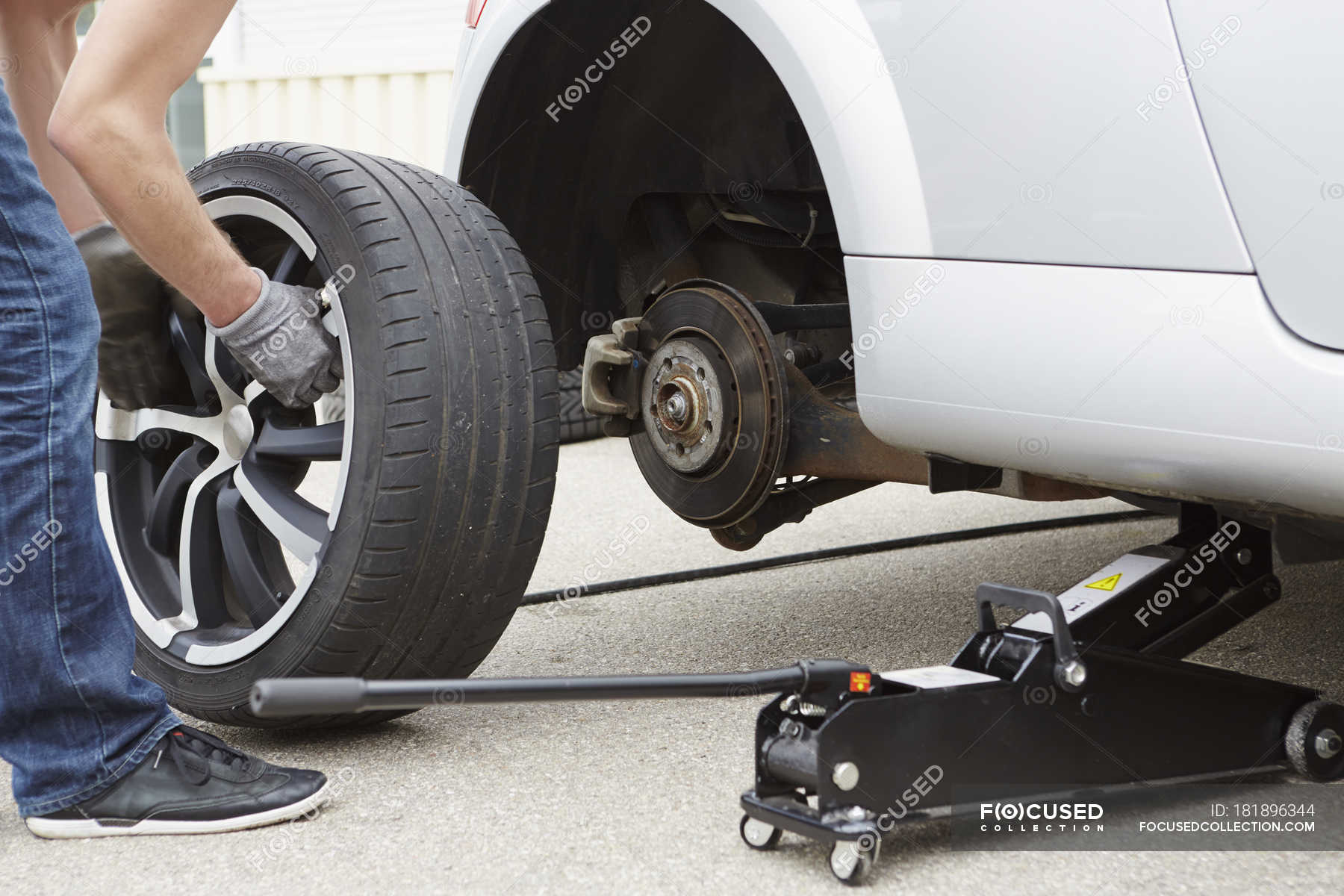 If you have questions regarding your trailer’s tires and when to replace them, consult with your owner’s manual, your trailer dealer, or a tire professional.
If you have questions regarding your trailer’s tires and when to replace them, consult with your owner’s manual, your trailer dealer, or a tire professional.
This post may contain affiliate links or mention our own products, please check out our disclosure policy.
Published on October 12th, 2018 by Donna Gum
This post was updated on November 23rd, 2021
Trailer tires last long enough to enjoy a lot of great RV trips. On the outside, they might look fine. But inside could be another story. Here’s what you’ll learn about when to replace RV trailer tires:
I found with tires, there are two areas to be concerned about: tread and aging tires.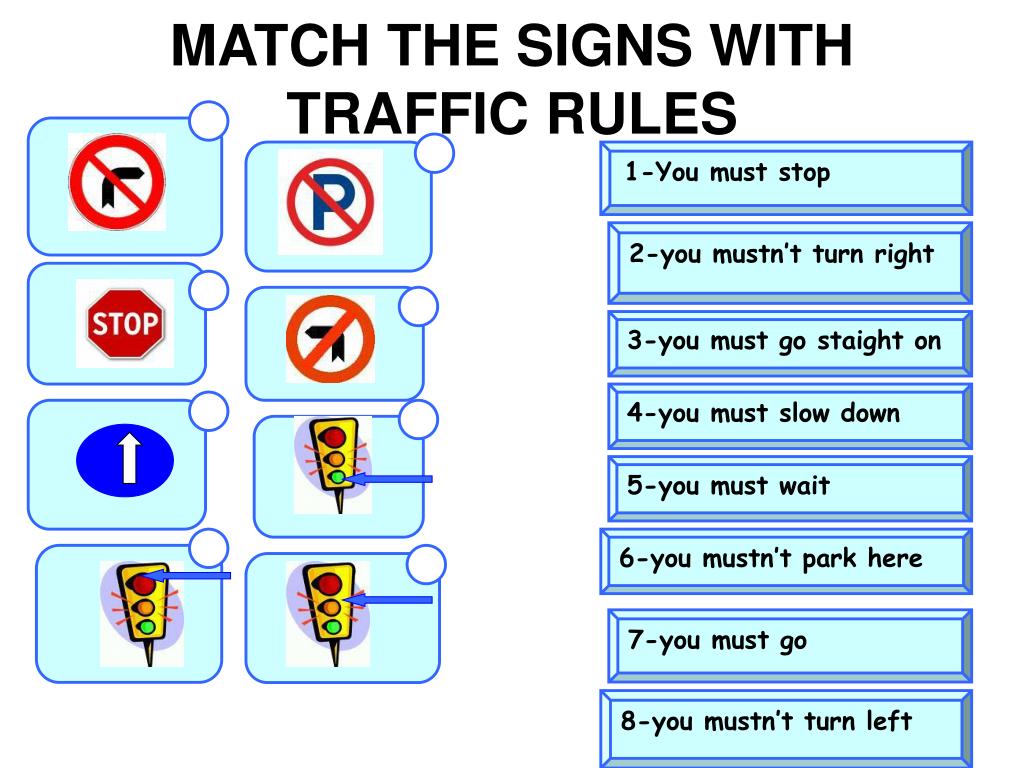
Aging tires also have obvious sidewall cracks. But cracks don’t always appear on the sidewalls. Some might be inside your tire. Internal cracks lead to separation of the steel belts. This can cause you to lose control of your trailer on the road.
Regardless of the mileage, if a trailer sits for four years without moving, the tires are still deteriorating. All RV trailer tires should be replaced within five years.
You know RV tires need replacing about every four or five years. But how do you know how long the tires were at the tire shop before you purchased them? There’s an easy way to find out.
All tire manufacturers stamp production dates onto the sidewalls. To find out how old your tires:

Heat and improper maintenance cause deterioration of tires. So does ultraviolet light, which causes chemical changes in the rubber. And just as hoses and belts in cars can dry rot, dry rot can set in if the tires are exposed to extreme heat and low inflation. Lack of use accelerates the process. Discoloration and cracks in the sidewalls of a tire can be a clue to dry rot.

Trailer tires are made with a thicker sidewall to handle weight, they require the right amount of inflation. If RV tires are under-inflated, it causes more heat while driving, and the tire could fail.
Proper RV trailer tire inflation is a must. Using the right amount of PSI prevents RV trailer tire blowouts, increases fuel efficiency, and slows the tire aging process. Take that pressure gauge out and put it to good use before each trip.
Your RV trailer tire maximum PSI is located on tire sidewalls.
RV tire pressure monitoring systems are an excellent investment.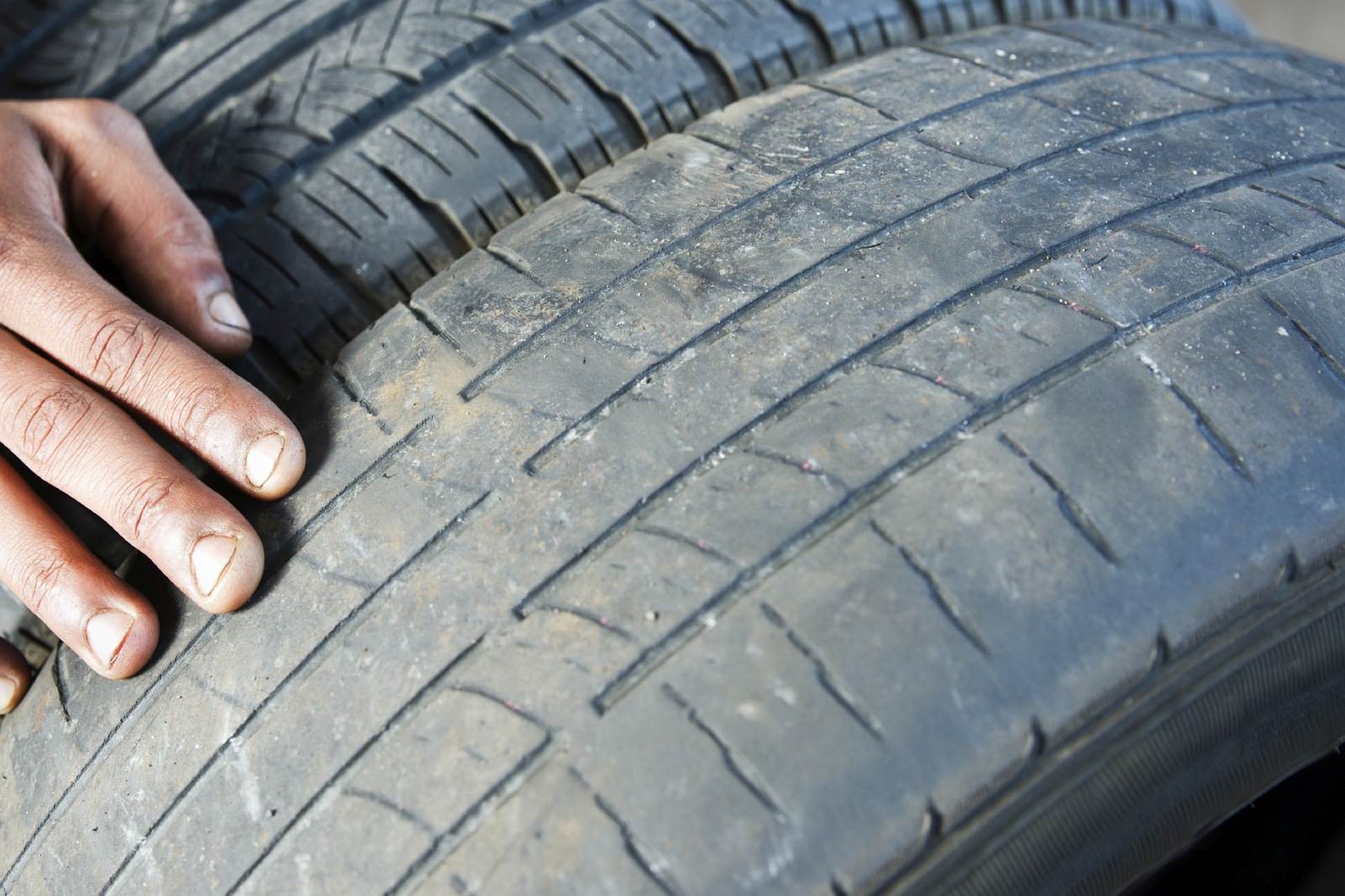 They give warnings if one of your tires becomes underinflated. This increases your safety and reduces risk of tire failure while moving. Many insurance carriers offer discounts for TPMS owners.
They give warnings if one of your tires becomes underinflated. This increases your safety and reduces risk of tire failure while moving. Many insurance carriers offer discounts for TPMS owners.
Tires can also be kept in better condition by winterizing them along with the rest of the camper.
Help your RV trailer tires last longer by keeping them balanced. Unbalanced RV tires develop wear spots on the sides of the tire treads. These spots can be harder to see on the inner side of the tire.
Passenger car tires are not built for campers with the heavier weight load.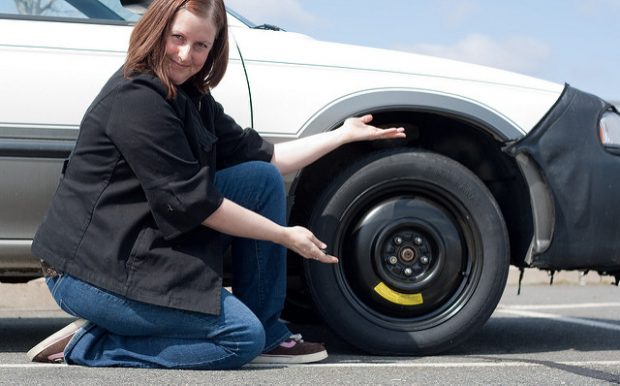 There are differences between passenger car tires, light truck tires, and special trailer tires. Light truck tires are more flexible and less durable for an RV trailer. This can lead to more chances of a blow-out or swaying.
There are differences between passenger car tires, light truck tires, and special trailer tires. Light truck tires are more flexible and less durable for an RV trailer. This can lead to more chances of a blow-out or swaying.
Using the right tire can help avoid trailer sway and tire blow-outs. Trailer tires are designed with larger polyester cords and stiffer sidewalls for carrying heavier weight loads. Special trailer tires should never be used for drive or steering axles, but for trailer position axles only.
If you see the letters LT, you have light truck tires, which need to be changed. Check and be sure that you don’t have an ST tire on the drive or steering axles. As I mentioned before, weight load is important. Since I load my camper with water, fuel, and food, how much weight can I safely put on my tires?
If you want your tires last as long as safely possible, don’t overload them. Overloading can also cause a tire blowout. Check the sidewall for the letter showing the load range. This can be a letter from A through N. Charts at tire shops will show what weight that letter load range can be. Note the letter on the sidewall of your trailer tire when you get your trailer. Never switch to a lower load-bearing tire.
Whether you are a weekend warrior or a full-time RVer, keep an eye on your wheels, your load range, and your PSI. Stay on top of all three and your trailer tires can carry you to many great adventures.
DON'T MISS OUT ON CAMPER REPORT UPDATESSign up for the newsletter today!
Driving comfort, handling and safety level depend on the technical condition of tires. Car tires provide traction to the car in various climatic and road conditions. blog.ship-ship.ru
Car tires provide traction to the car in various climatic and road conditions. blog.ship-ship.ru
Driving comfort, handling and safety level depend on the technical condition of tires. Car tires provide traction to the car in various climatic and road conditions.
The tread is the outer layer of the tire. It comes into contact with the road, creates a contact patch and provides traction. The tread pattern differs in volume, consists of blocks, grooves, lamellas of a certain depth.
The tread is responsible for the grip of the wheels on dry, wet, snowy and icy roads. It removes water, dirt and snow from the contact patch. The system of blocks and grooves prevents the effect of hydroplaning, when a water cushion forms between the wheel and the road during rain.
The degree of wear of the tire tread affects the handling, maneuverability, stability of the car, and the length of the braking distance. There are requirements for the depth of the tread pattern. If the outer layer of the tire is worn out, then it is changed.
If the outer layer of the tire is worn out, then it is changed.
It is important to understand that worn tires are not able to cope with the tasks:
Tread wear is the main cause of deterioration in braking quality, poor handling and directional stability. At the same time, worn tires show equally unstable behavior on any type of road surface in rain, snow or dry weather.
Winter and summer tires differ in thickness, composition of the rubber compound, the number, shape and size of blocks and grooves. The selection of tires depends on the make and model of the car, body type and class, climatic and road conditions (city, highway, country roads, off-road), speed limit and driving style.
The new tires have deep grooves and numerous sipes that provide excellent traction. Manufacturers produce winter tires with three types of tread:
Spikes are used for driving on roads and ice that have not been cleared of snow. The spikes bite into the ice crust and split it, providing excellent traction. But when driving on dry asphalt, the spike loses its working properties.
Velcro friction tires are suitable for driving on a dry clean road, melted and shallow snow, mud. The main difference between Velcro is the presence of lugs, special grip edges that increase the stability of the wheels on wet road surfaces.
Scandinavian tires are used in the conditions of the northern regions, which are characterized by extreme sub-zero temperatures and snowfalls. The main difference between the Scandinavian tread is wide sipes, massive numerous blocks cut by grooves.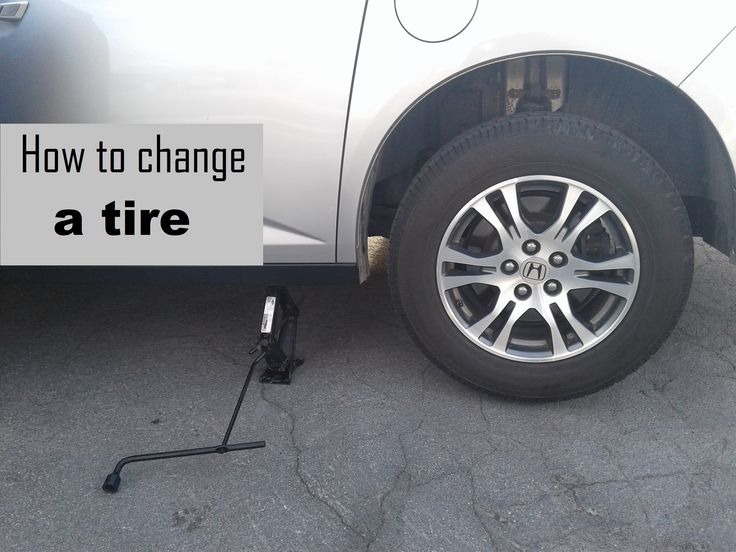
In modern tire models, the tread height is 9-12 mm. The permissible wear level here will be from 4 to 6 mm. If the wear 'threshold' passes, the tire is changed regardless of how long it lasts.
Important: The tread of a winter tire is always 3-4 mm higher than the summer model. The depth of the Scandinavian tire pattern should also be sufficient - at least 8-9 mm.
The need for replacement will also be indicated by special indicators located at the base of the tire.
The tread depth of summer tires is 6-8 mm. The minimum tread wear must be at least 1.6 mm.
The tread pattern must be clearly legible. Otherwise, the traction and grip properties of the wheels deteriorate, the tires cannot effectively remove water and dirt from the contact patch, and the effect of aquaplaning is possible.
For sports cars, the tread height is 12 mm. For SUVs, the height indicator increases by another 5 mm.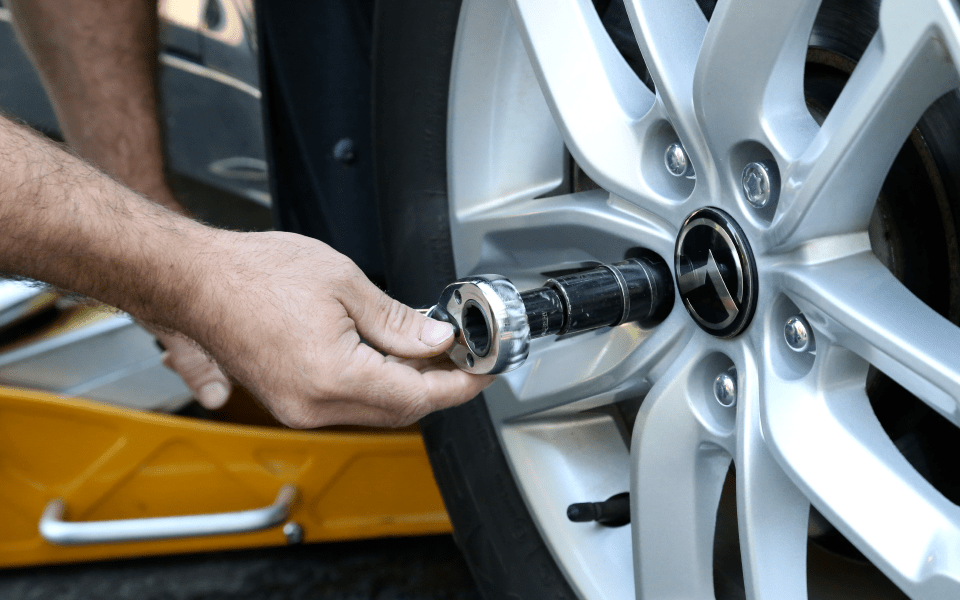
According to the rules of the road, the maximum allowable tread wear is:
The residual wear of the tread for minibuses and buses designed to carry more than 8 passengers is 2 mm.
In order not to get into an emergency on the road, the car owner should periodically check the wear of the tread pattern. This can be done in the following ways:
Take a measuring tool with a depth gauge - a caliper. Pull out the depth gauge, rest its nose against the base of the drawing. The caliper should rest against the top of the rubber.
You will see readings on a mechanical or electronic scale. If the value for summer tires is less than 1. 6 mm, such tires need to be replaced urgently. For winter, this figure will be below 4 mm.
6 mm, such tires need to be replaced urgently. For winter, this figure will be below 4 mm.
To make the reading as accurate as possible, measurements are taken from the base of the figure. It should be smooth, without protrusions.
Take a coin with a face value of two rubles. Put it in the groove. If the ‘meter’ deepened to the word ‘ruble’, the residual depth is 4 mm. If the word 'ruble' has disappeared - the depth is 6 mm. But if the protector hid only the beginning of the 'wreath', then 2 mm of the pattern remained. In this case, play it safe and replace the tires.
The ‘coin’ method is inaccurate and allows you to find out the approximate depth. It is used before passing the inspection or when buying tires with mileage.
Manufacturers today offer tires with special wear indicators. This is a special part of the drawing: it differs in color, shape, size.
On the surface of tires you can find the following indicators:
 Numbers of different depths are applied to the tire: 2, 4, 6. If the number 2 has disappeared, the tread has decreased by two millimeters. The numbers disappear gradually during operation. When the largest number disappears, take care of replacing the rubber.
Numbers of different depths are applied to the tire: 2, 4, 6. If the number 2 has disappeared, the tread has decreased by two millimeters. The numbers disappear gradually during operation. When the largest number disappears, take care of replacing the rubber. Tires don't always wear evenly. Car owners often face such a problem, and here are its main reasons:
When inflating wheels, follow the manufacturer's recommendations. Neglect of this rule will lead to excessive pressure in the tires.
Increased pressure increases noise, increases damage, reduces handling.
If the wheels are poorly inflated, there is a deflection in the central part. Decreased acceleration, increased fuel consumption, increased turning radius.
Under normal pressure, the rubber wears evenly.
When a wheel hits a hole, the wheel alignment is knocked off the pothole. Car owners are not always able to determine this malfunction on their own and in a timely manner. The indicator is - different wear of the tread.
Excessive camber angle (positive or negative) leads to abrasion of the rubber in the shoulder areas. The cover is bevelled. A car with such wheels cannot move in a straight line, and the driver has to constantly tighten the steering rack.
Excessive toe angle (positive or negative) results in a 'knocked down' tread. The drawing is assembled into an accordion, forming a bumpy, rib-like surface.
Due to defects in tires or rims, it is impossible to properly balance the wheels. Such a ‘malfunction’ leads to uneven wear, poor handling and vehicle stability.
Such a ‘malfunction’ leads to uneven wear, poor handling and vehicle stability.
The first sign of defective rubber is the appearance of shocks, the beating of the steering column.
Suspension condition should be checked annually. Worn parts or failure of this part of the undercarriage of the machine will also lead to uneven tire wear.
Tires with residual wear of the tread pattern, rubber with cracks and cuts are subject to replacement.
It is important to remember that tires are subject not only to abrasive wear, but also lose their performance under the influence of climatic conditions, exposure to road dust, reagents, and high loads. The result of such influences is a hardened tire covered with microcracks.
Therefore, tires need to be changed every five years. This is the life of the tire, after which it loses technical and performance characteristics, even if the height of the residual tread allows the car to participate in road traffic.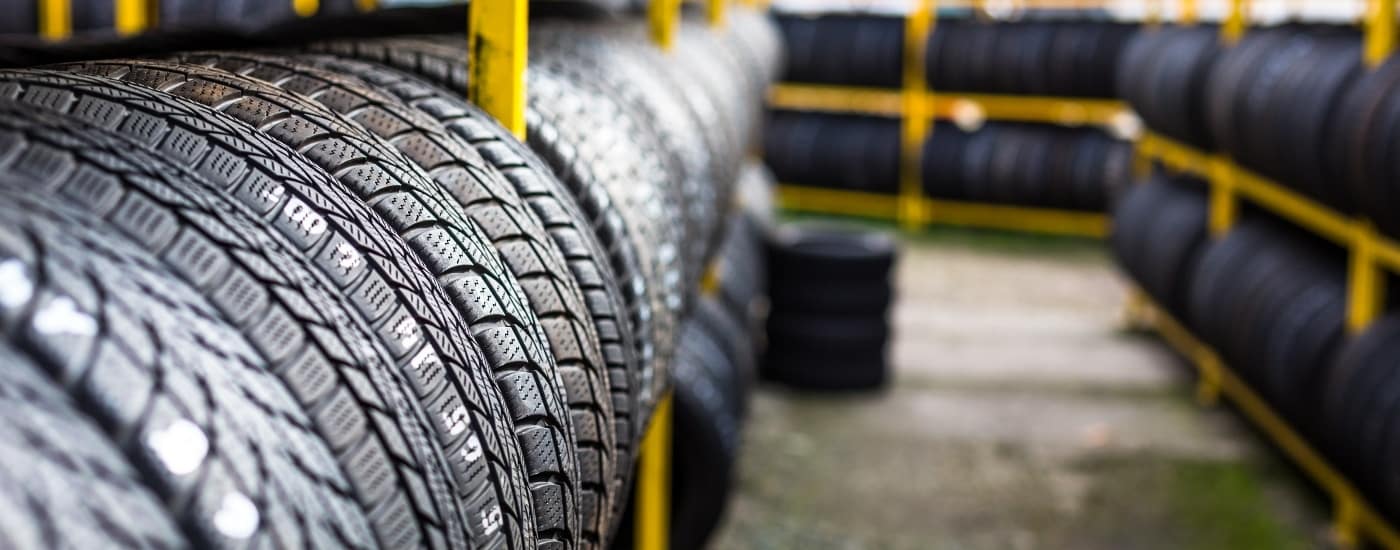
02/11/2020 2020-02-11
Tags: #summer tires #Winter tires #winter studless tires
Car tires - an elastic shell mounted on a disc rim. It is the tires that dampen the small vibrations that occur due to imperfect roads and compensate for the inconsistency in the trajectories of the wheels. The characteristics of tires affect: driving comfort, maneuverability and vehicle stability. However, even the highest quality rubber eventually deteriorates. Therefore, every driver should know how to correctly determine the degree of tire wear in order to replace them in time.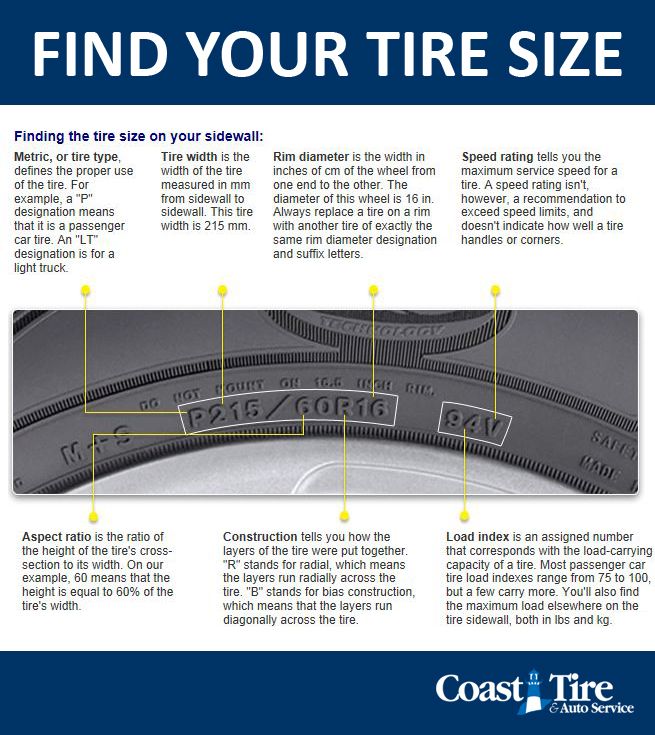 Car and truck tires have different periods of use, depending on both the initial characteristics of the products and the operating conditions.
Car and truck tires have different periods of use, depending on both the initial characteristics of the products and the operating conditions.
Tires wear out not only due to operating loads. They are characterized by natural aging, since the rubber compound from which the tires are made gradually loses its elasticity and resilience. The use of such rubber leads to a deterioration in vehicle controllability and creates dangerous conditions due to the high probability of tire rupture on the way.
In accordance with GOSTs 4754-97 and 5513-97, the warranty period for car tires is 5 years. Foreign manufacturers claim that the working life of tires is 5-10 years. There are no legislative acts obliging drivers to change tires after this period, but in order to create safe driving conditions, the driver must take into account the recommendations of GOST. Manufacturers usually set their own warranty periods.
Michelin, Bridgestone, Nokian, Continental, Dunlop, Pirelli, Yokohama:
| Brand | Warranty period declared by the manufacturer |
| Bridgestone | Tire dependent - 3-6 years |
| Nokian
| 5 years |
| Continental | 10 years old |
| Dunlop | Tire dependent |
| Pirelli | Tire dependent |
| Yokohama | 5 years |
| Michelin | 10 years old |
During the warranty period, the responsibility for identified significant defects rests with the manufacturer. The owner of the vehicle will be forced to eliminate defects on his own if there have been:
The owner of the vehicle will be forced to eliminate defects on his own if there have been:
If the vehicle is used intensively, it may be necessary to replace the tires before the end of the warranty period. Therefore, regulatory documents establish the mileage after which you should think about replacing tires.
Therefore, regulatory documents establish the mileage after which you should think about replacing tires.
The maximum standard mileage is:
The actual rate of tire wear may differ from the standard values due to a whole list of factors, such as:
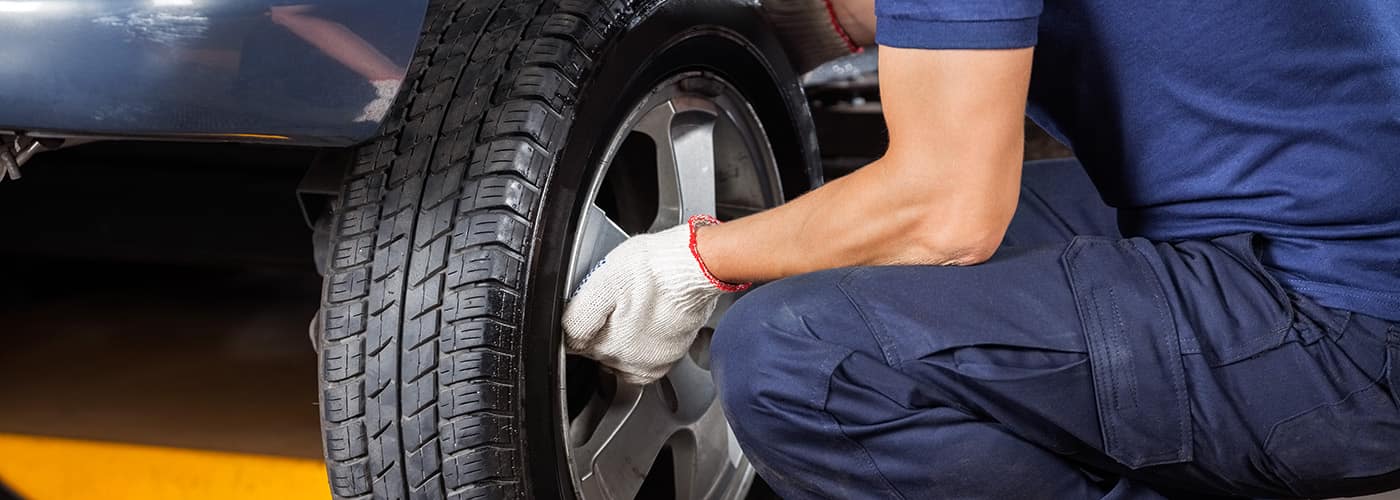 Low-quality products under the influence of abrasive particles wear out very quickly.
Low-quality products under the influence of abrasive particles wear out very quickly. You can determine the need for tire replacement yourself by the following signs:
Table of minimum allowable tread depth for different modes of transport as amended on 01/01/2015
| Minimum allowable remaining tread depth | Type of transport |
| 0.8 mm | L - motorcycles, mopeds, quad bikes |
| 1. | N2, N3, O3, O4 - trucks with a maximum permissible mass of more than 3.5 tons and trailers with a maximum permissible mass of more than 3.5 tons |
| 1.6 mm | M1, N1, O1, O2 - cars, trucks and trailers with a maximum authorized mass of less than 3.5 tons |
| 2.0 mm | M2, M3 - buses |
| 4.0 mm | Winter tires marked M+S, M&S, M S, the amount of residual tread depth does not depend on whether tires are installed on cars or trucks |
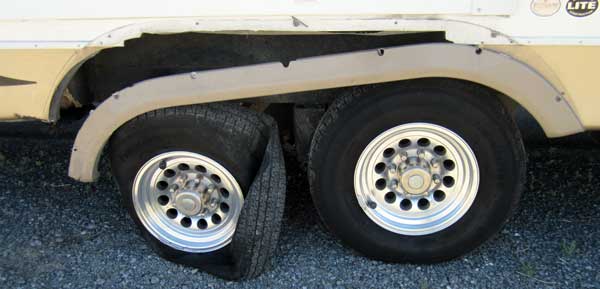 If it does not exceed 50% of the original value, then the tires must be replaced.
If it does not exceed 50% of the original value, then the tires must be replaced. Important! If the outer edges of the tire wear faster, the internal pressure is insufficient. Accelerated wear of the central part indicates excessive pressure. Wear on one side indicates a violation of the toe angle. Uneven surface wear is evidence of aggressive driving with rapid acceleration and hard braking.
You can extend the life of your tires by doing the following:
Regulatory document regulating the terms and conditions of tire storage - GOST 24779-81.